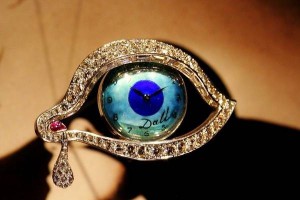Artifact 3: What is Art For?
Objectives:
– Consider the origins of art
– Explore a brief history of Western art
– Examine multiple perspectives for evaluating art
Original post: What is Art For?
In the article “What is Art For?” the author Dissanayake, E briefly talks about the development and some significant changes of Western concept of art throughout history, and from her own view of art for life’s sake, she called it “palaeoanthropsychobiological- first, that the idea of art encompasses all of human history; second, that it include all human societies; third, that it accounts for the fact that art is a psychological or emotional need and has psychological or emotional effects.” (P.15) And she also came to develop the idea of art is helping human species survive from very early period, just as the role of art in the ritual ceremonies. Art is important, and “adopting the species- centered view of art (P.26)” can make human species better understanding art.
In the TED video, the speaker Denis Dutton introduces the Darwinian theory of beauty and he states that beauty is complicated as the variety of beautiful: “Human beings, natural landforms, works of art, and skilled human actions.” Dutton gives some examples such as Beethoven is adored in Japan and American music and movies go everywhere around the world to represent the beauty is about universal crossed and culture, aesthetics, pleasure and value. And then he points out the natural selection and sexual selection which is about the biological aspect. In his talking, the example I am interested the most is about the landscape pattern that people from world tend to be love it. With the open spaces of low grass and water, a pathway towards the distant, and wild animals and birdlife just freely involved.
People always think that the artistic beauty is exhaustively influenced by culture; however, I think culture does impacts the way artist critical thinking of art and selecting tools to make art, but not where the motivation comes from. Just like people from different places with different cultural backgrounds tend to love one typical landscape, the real passion of creating or responding art is coming from the biological selection of human species that arose in very early period and will pass it to generations and generations. My question is, if art is universal and everyone can appreciate art even without understanding what the real meaning behind it, how one can have the emotional changes just by looking or watching the art?
Reflection:
(the jewelry designed by salvador dali)
By introducing the simplified history of Western art and how the art transformed over time with it’s different meanings, Dissanayake E. talks about the different ideas of art that developed over centuries. Also, Denis Dutton in his TED video shows the audience the Darwinian theory of beauty and represents the beauty is about universal.
Basically the third artifact has help me explore the history of Western art and gave me the opportunities to think about how the art has arise, and examine the different ideas of art and beauty. I personal really enjoy the quote from Dissanayake, “The species- centered view of art combines modernism’s proclamation that art is of supreme value and a source for heightened personal experience with postmodernism’s insistence that it belongs to everyone and is potentially all around us.”(P.22) I think the way art exists in our world influences human being’s life sometimes just by showing nothing.
Future goals:
In the future I want to be exploring more history of how art has developed, so I will be able to have a more comprehensive perspectives of art. And I want to be able to challenge myself of critiquing artworks that created in different time periods and I can use art language to see an artwork instead of just using common sense.
Bibliography:
Table of Contents:
Artifact 1: First Blog Post- JR and His Exhibitions
Artifact 2: Life Values Assessment
Artifact 5: The Art of Personal Adornment
Artifact 6: Creative Spirituality
Artifact 7: Art, Games, and Technology Research
